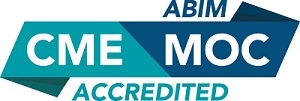
Virtual Lupus Clinic 2024: All Cases
Activity Overview
The Virtual Lupus Clinic is a four-part series with case-based learning to help non-rheumatologists recognize, refer, and manage patients with lupus in conjunction with a rheumatologist. You will virtually examine four patients, each presenting with different symptoms, decide which labs to order, build the differential diagnosis, and decide next steps for treating the patient, including appropriate referrals, if needed.
This activity includes all cases:
- Case 1: A 40-year-old Asian female with facial rash, hair loss, fatigue, myalgias and a history of finger color changes in cold weather.
- Case 2: A 27-year-old Hispanic male with a history of thrombocytopenia and recurrent pleurisy coming in with malar rash, pleural friction rub concerning for pleurisy, and hand synovitis.
- Case 3: A 34-year-old Caucasian female with new onset HTN, pitting edema, weight gain, scarring alopecia, scarring rash on the nose, arthritis, and fatigue.
- Case 4: A 49-year-old African American female who presents with oral and nasal ulcers, arthritis, and fatigue.
Virtual Lupus Clinic Series
This activity is part of a series. See the other activities in the series below.
- Virtual Lupus Clinic: All Cases
- Virtual Lupus Clinic – Case 1
- Virtual Lupus Clinic – Case 2
- Virtual Lupus Clinic – Case 3
- Virtual Lupus Clinic – Case 4
Registration is complimentary.
Target Audience
Non-rheumatologist physicians, primary care providers, physician assistants, and advanced practice nurses.
Learning Objectives
Case 1
Upon completion of this activity, participants should be able to:
- Identify classic and atypical presentations of lupus, focusing on patient history, signs, symptoms, and physical examination findings
- Identify and interpret lab studies typically utilized in a new patient workup sent when evaluating a new patient with lupus
- Effectively communicate results of initial evaluation to patients, including strategies to ensure effective handoff to a specialist, if appropriate
- Identify other common disease processes that may mimic lupus
Case 2
Upon completion of this activity, participants should be able to:
- Identify classic and atypical presentations of lupus, focusing on patient history, signs, symptoms, and physical examination findings
- Identify and interpret lab studies typically utilized in a new patient workup sent when evaluating a new patient with lupus
- Provide self-management and health maintenance education to patients
Case 3
Upon completion of this activity, participants should be able to:
- Identify classic and atypical presentations of lupus, focusing on patient history, signs, symptoms, and physical examination findings
- Identify and interpret lab studies typically utilized in a new patient workup sent when evaluating a new patient with lupus
- Effectively communicate results of initial evaluation to patients, including strategies to ensure effective handoff to a specialist, if appropriate
- Recall when to properly refer a patient to rheumatology in a timely manner
Case 4
Upon completion of this activity, participants should be able to:
- Identify classic and atypical presentations of lupus, focusing on patient history, signs, symptoms, and physical examination findings
- Identify and interpret lab studies typically utilized in a new patient workup sent when evaluating a new patient with lupus
- Recognize signs and symptoms that may indicate a lupus flare
- Use high-yield lupus-specific questions and physical examination findings to help identify if a patient is in an active lupus flare and how to initiate appropriate flare treatment while awaiting a rheumatology referral
- Provide counseling and anticipatory guidance for patients in whom lupus is suspected and an initial referral to rheumatology is made
CE & MOC Information
CME
ACCME Accreditation Statement
The American College of Rheumatology is accredited by the Accreditation Council for Continuing Medical Education (ACCME) to provide continuing medical education for physicians.
See the ACR's CME Mission Statement. For more information, download the AMA PRA Booklet.
AMA Designation Statement
The American College of Rheumatology designates this enduring material for a maximum of 4.00 AMA PRA Category 1 Credit(s)™. Physicians should claim only the credit commensurate with the extent of their participation in the activity.
CME credit must be claimed by February 1, 2027, at 11:59 PM ET.
MOC
MOC Recognition Statement: American Board of Internal Medicine (ABIM)
Successful completion of this CME activity, which includes participation in the evaluation component, enables the participant to earn up to 4.00 MOC points in the American Board of Internal Medicine's (ABIM) Maintenance of Certification (MOC) program. It is the CME activity provider's responsibility to submit participant completion information to ACCME for the purpose of granting ABIM MOC credit.
By completing this activity, you provide the ACR permission to share completion data with the ACCME and the certifying board.
After submitting a reflective statement with key takeaways from the activity, MOC points will be applied for ABIM diplomates to the ABIM diplomate number and date of birth provided when you registered. Points are sent nightly to ACCME and then transferred to the ABIM Physician Portal. Please allow at least 48 hours for points to display in the portal.
MOC points must be claimed by February 1, 2027, at 11:59 PM ET.

Financial Relationship Disclosures
ACR Disclosure Statement
It is the policy of the American College of Rheumatology (ACR) to ensure that Continuing Medical Education (CME) activities are independent and free of commercial bias. To ensure educational content is objective, balanced, and guarantee content presented is in the best interest of its learners and the public, the ACR requires that everyone in a position to control educational content disclose all financial relationships with ineligible companies within the prior 24 months. An ineligible company is one whose primary business is producing, marketing, selling, re-selling or distributing healthcare products used by or on patients. Examples can be found at accme.org.
In
accordance with the ACCME Standards for Integrity and Independence in
Accredited Continuing Education, ACR has implemented mechanisms prior to the
planning and implementation of this CME activity to identify and mitigate all
relevant financial relationships for all individuals in a position to control
the content of this CME activity.
Nature of Financial Relationships
All individuals that participate in an ACR-sponsored activity and are able to change content or influence the content of the activity must disclose to the planning committee and audience all financial or other relationships with ineligible companies including, but not limited to:
- Advisor or review panel member
- Consultant
- Employee
- Officer or Board Member
- Grant/research support
- Speaker/honoraria includes speaker’s bureau, symposia, and expert witness
- Independent contractor
- Executive role and/or ownership interest
- Royalties and/or patent beneficiary
- Intellectual property/patents
- Stock options or bond holdings in a for-profit corporation or self-directed pension plan
- Private investigator
- Expert witness
- Equity interest
- Other: specify details
None: Has no relevant financial relationship(s) with ineligible companies to disclose.
All participants that created and/or were able to influence the content and delivery of this activity reported the following disclosures. All of the relevant financial relationships listed have been mitigated.
- Petros Efthimiou, MD (Planner) – Springer7, Uptodate7, Pfizer5, Amgen5, Sanofi5, Kiniksa5
- M. Brad Nelson, MD, MPH (Planner) – None
- B. Anne Eberhard, MBBS (Planner) – None
- Parastoo Fazeli, MD (Planner) – None
- Schartess Culpepper Pace, MD (Planner) – None
- Nina Ramessar, MD (Planner) – GlaxoSmithKline8
- Kimberly DeQuattro, MD (Reviewer) – Kyverna Pharmaceuticals5, GlaxoSmithKline5
- Shivani Garg, MD (Reviewer) – None
- Katie Chiseri, MPH, MCHES, PMP- Reviewer - None
Acknowledgement of Commercial Support
This activity is supported by the Centers for Disease Control and Prevention (CDC) of the U.S.
Department of Health and Human Services (HHS) as part of a financial
assistance award of $7 million with 100 percent
funded by CDC/HHS. The activity content was provided by the author(s)
and does not necessarily represent the official views of, nor an endorsement by,
the CDC/HHS or U.S. Government.
See industry engagement opportunities
and benefits of supporting the ACR.
Educational Activity Policies
See ACR educational activity policies, including the online enduring activity refund policy.